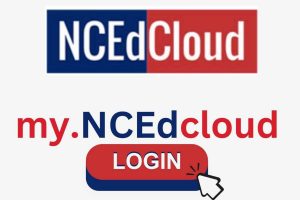Content Attributes
Among undergraduate students at U.S. universities, the study found that 45% of students had low levels of critical thinking. Moreover, three years after graduation, 36% of graduates still had low levels of critical thinking. What does it mean for the university environment? If nearly half of the students are not skilled in critical thinking, it is pretty apparent that we have to do more than develop it, and we have to do it in some way to integrate it into our curricula. On the other hand, we all know that critical thinking is critical to teach as a separate subject; it needs to be “embedded” in many different disciplines.
Al has already changed a lot in educational process. For example, you can already find python homework help, which was impossible a few years ago. In this case, the future of education should be discussed already, in order to be able to adjust the educational institutions to the requirements of today.
So what should universities and academia look at? Here are some thoughts about this increasing issue.
Creativity
Creativity can not be taught – with the invention of need to grow. So we have to work primarily on creating the conditions in which this creativity in each of us will naturally increase.
Convergent and divergent creativity
In his book, the author also discusses two types of thinking: convergent and divergent. When students are focused on specific typical questions when they can not go beyond the formulated questions when answering an open-ended question, they ask the variants of the answer. In the opinion of the author of the book, the way out of this is: it is necessary to develop something opposite, namely playfulness, curiosity, and willingness to take risks.
Humanics as a New Model of Education
However, on one side, we have threats, and on the other side, we have expectations from teachers about how to work in this world, and the author of the book proposes his model of education, which he calls humanics. It is not easy to find the text in Ukrainian, but it is possible to draw an analogy with mechanics with how mechanics works. Humanics is not humanism in the sense of “humanitarian knowledge.” It is a more complex phenomenon.
Humanics allows students to understand the high-tech world around them and, at the same time, will enable them to exceed it through the constant reinforcement of those mental and intellectual qualities that are unique for people, i.e., abilities to be creative and mentally flexible.
It is essential to be able to use this word, deal with it, but also to go beyond it. The technological world is not self-sufficient. The human being remains at its center. We do not create devices and machines for their own sake; we make them for the benefit of people – this is the book’s point. Moreover, this model is based on three new literacies: technological, data, and human. Let us talk about each of them in detail.
Data comprehension
Besides the fact that everything associated with Data Science is a prevalent profession, it is impossible to ignore the fact that wherever we look, we can make significantly better decisions and create better educational products and services, base our conclusions and analysis not on intuition, not on their expert but intuitive experience, but backed up by specific data, detailed history.
Universities are greatly affected by this problem. It is essential to collect data; it is necessary to analyze them. It would help if you learned how to interpret them correctly, make conclusions, and publicize them.
People’s understanding
We must be able to work with people and communicate with them, and the ability to motivate them.
With the help of technology, we can make perfect decisions, but the question in today’s world is not so much what to do and how to do it, but why. In the center is a person. We create our services, products, and solutions to make the quality for them, which requires a good understanding of who our end-user is. I recently concluded that more and more technology groups are beginning to hire Liberal Arts graduates.
You can develop a great system, but it is essential to know its end-user. The manager and the developer must be able to come to this end-user, describe him, talk to him, take some insights from him, and then give him your solution in the form of a technological product. Engineers must be able to convey their idea to specific people. So when students use law assignment help, they sometimes still some skills from themselves.
Cultural Bending.
We work in a multicultural world; the world is unwieldy, and we must understand other cultures. In our work, we are constantly exposed to cross-cultural situations and teams. It seems logical that we should cultivate these abilities in our students because cultural stubbornness, bendiness, and vitality do not grow on their own.
In this context, I would like to quote the example of Minerva University, where students spend the entire duration of their studies in another city and, in general, take advantage of their educational trips to seven cities around the world, on different continents. This is done to gain experience in multicultural and cross-cultural communication.
How Do I Teach?
Both teachers and administrations of universities should consider necessary accents, splash, and insights. What to do?
- Lead training beyond individual disciplines and teach across disciplines; the ability to transfer experience and skills from one field to another;
- practice project-based learning;
- Put teaching assignments into real-life contexts and practice dual education.
Lifelong learning
If you look at our universities, they are very well sharpened to give deep knowledge. Our university structures have been formed for this purpose – some faculties and departments provide such specialized knowledge. Furthermore, when we need to create a new educational program that meets the market demand, we often find that this program’s competence to train skills is between different departments and between other faculties.



